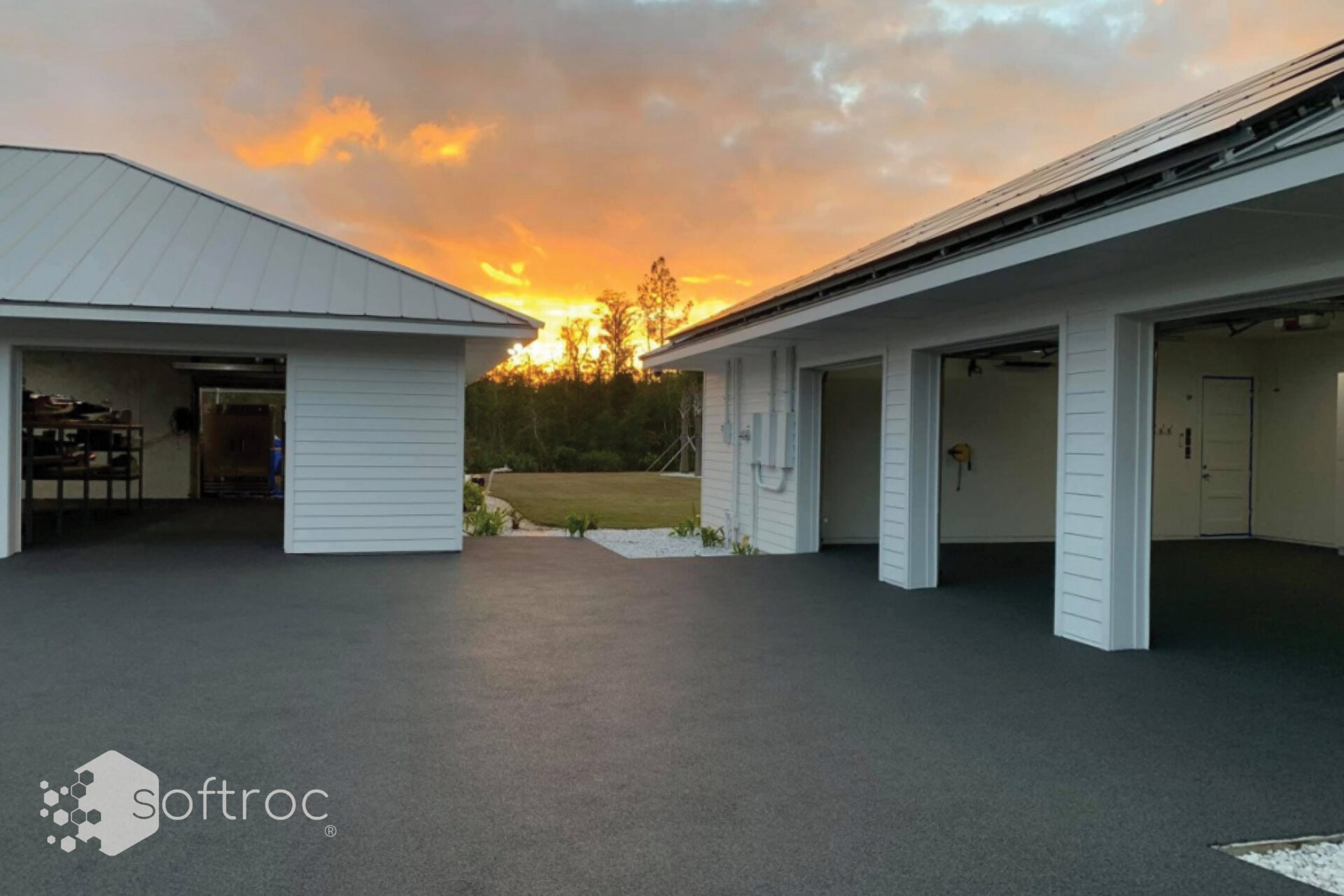
Rubber surfaces are everywhere, from busy playgrounds to private home gyms. Rubber surfacing offers shock absorption, slip resistance, bounce and a comfortable feel underfoot. It’s also easy to clean and fast to install. Many choose rubber to protect against falls and maintain a durable, water-resistant space.
However, if you opt for a rubber surface in your indoor or outdoor space, you still have options to consider: a pour-in-place floor or floor tiles.
The choice you make will depend on your specific needs and budget, but here are some of the differences to help you decide.
Customization
Pour-in-place rubber invites creative possibilities. Blending colors, designing playful patterns or incorporating logos becomes simpler when there’s no need to cut individual pieces. A pour-and-play surface flows around curved edges or existing structures without leaving gaps. Our pour-in-place rubber playground surface might involve swirling colors or custom themes tailored to a schoolyard or community park.
Rubber floor tiles still come in many styles and shades. That said, each tile follows a specific shape, so weaving complex patterns can require extra planning. Projects that include columns, posts or angled corners often result in wasted material. Softroc’s poured rubber floor, on the other hand, merges seamlessly with irregular edges to create a refined finish.
Aesthetics
A pour-in-place rubber surface forms a uniform layer without visible seams, which appeals to property owners seeking a polished, modern look. That continuous flow reduces any patchwork effect and suits large rooms where tile edges might distract from the overall design.
Rubber floor tile setups boast a clean arrangement, but each tile has lines that can shift slightly over time if the subfloor isn’t perfectly level. Outdoor placements — think rubber floor tiles for basement walkouts or patio expansions — might also see minor separation from extreme weather shifts. Our pour-in-place rubber flooring avoids that outcome by forming a single, gap-free layer that holds up through seasonal changes.
Installation
Straight walls and open floor plans favor rubber tiles for gym floor additions, basement renovations or basic garage floor updates. However, tiles can be tricky when the subfloor has uneven slopes or the layout includes tight corners and poles. Additionally, if tiles aren’t perfectly cut, there may be gaps in between them, which can present a tripping hazard.
A pour-in-place rubber approach adapts to mild variations in height. Workers mix the pourable rubber floor material on-site, spread it evenly and smooth it across the surface. That method tackles unusual shapes, uneven flooring, or obstacles with relative ease. Many notice less disruptions, leftover scrap and guesswork when dealing with pour-in-place rubber surface installations.
Maintenance and Durability
Rubber tends to repel scuffs and stains, which is why many rely on garage floor tiles rubber solutions for vehicles and heavy equipment. Gym rubber floor tiles handle dropping weights and constant foot traffic well. However, tiled floors have seams that can collect dirt or water. Tiles can also bow up along the edges, which can create a tripping hazard. Checking those seams and reattaching loose edges can add to maintenance.
A poured rubber floor eliminates joint lines, minimizing places where moisture might pool. Cleaning usually involves sweeping or a gentle wash with soap and water. Because the surface is smooth, you won’t have to worry about safety risks developing over time.
Cost
Concerns with rubber tiles might arise in irregularly shaped rooms because tile cuts lead to extra costs. When they need replacing, matching older tile batches might prove challenging. Still, small, simple projects or extremely tight budgets may benefit from tiles as a quick, straightforward option.
A pour-in-place rubber surface typically costs more upfront. We recognize budget factors into every decision, so we offer financing solutions to spread out those expenses. Our clients receive warranty protection that eases worries about repairs. Gaps, lifted edges and tile replacements are less common with poured rubber, which can reduce future maintenance.
Choosing the Right Rubber Flooring
Pour-in-place rubber flooring consistently impresses with its design freedom and smooth finish.
Softroc guides every customer from concept to completion, making it possible to tailor colors, incorporate unique designs and enjoy a tidy final product. Our poured-in-place rubber surface stands up to the demands of busy families and active facilities. Financing options and warranty assurances protect your investment, resulting in a stress-free flooring solution that looks impressive and performs admirably.
Contact us today to get your project started.